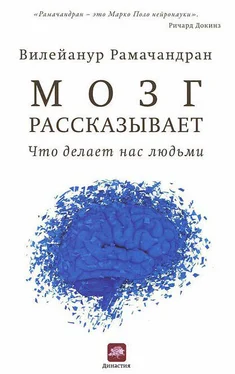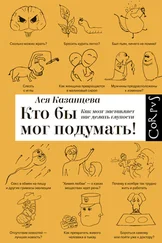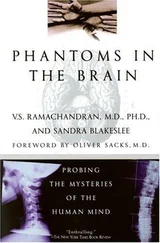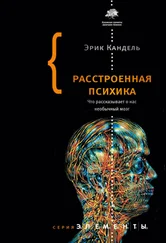‘Robertson, I. (2001). Mind sculpture. New York: Bantam Books. Robertson, L. C., & Sagiv, N. (2005). Synesthesia: Perspectives from cognitive neuroscience. New York: Oxford University Press.
’Rock, I., & Victor, J. (1964). Vision and touch: An experimentally created conflict between the two senses. Science, 143, 594–596.
Rosen, B., & Lundborg, G. (2005). Training with a mirror in rehabilitation of the hand. Scandinavian Journal of Plastic and Reconstructive Surgery and Hand Surgery, 39(104–108).
Rouw, R., & Scholte, H. S. (2007). Increased structural connectivity in grapheme-color synesthesia. Nature Neuroscience, 10(6), 792–797.
Saarela, М. V., Hlushchuk, Y., Williams, A. C., Schurmann, М., Kalso, E., & Hari, R.
(2007). The compassionate brain: Humans detect intensity of pain from another’s face. Cerebral Cortex, 17(1), 230–237.
Sagiv, N., Simner, J., Collins, J., Butterworth, B., & Ward, J. (2006). What is the relationship between synaesthesia and visuo-spatial number forms? Cognition, 101(1), 114–128.
’Sacks, O. (1985). The man who mistook his wife for a hat. New York: HarperCollins.
’Sacks, O. (1995). An anthropologist on Mars. New York: Alfred A. Knopf.
’Sacks, O. (2007). Musicophilia: Tales of music and the brain. New York: Alfred A. Knopf.
Sathian, K., Greenspan, A. I., & Wolf, S. L. (2000). Doing it with mirrors: A case study of a novel approach to neurorehabilitation. Neurorehabilitation and Neural Repair, 14,73–76.
Saxe, R., & Wexler, A. (2005). Making sense of another mind: The role of the right temporo-parietal junction. Neuropsychologia, 43,1391–1399.
’Schacter, D. L. (1996). Searching for memory. New York: Basic Books.
Schiff, N. D., Giacino, J. Т., Kalmar, K., Victor, J. D., Baker, K., Gerber, М., et al. (2007). Behavioural improvements with thalamic stimulation after severe traumatic brain injury. Nature, 448,600–603.
Selles, R. W., Schreuders, T. A., & Stam, H. J. (2008). Mirror therapy in patients with causalgia (complex regional pain syndrome type II) following peripheral nerve injury: Two eases. Journal of Rehabilitation Medicine, 40,312.
’Sierra, M»& Berrios, G. E. (2001). The phenomenological stability of depersonalization: Comparing the old with the new. The Journal of Nervous and Mental Disease, 189(9), 629–636.
Simner, J., & Ward, J. (2006). Synaesthesia: The taste of words on the tip of the tongue. Nature, 444(7118), 438.
Singer, Т, (2006). The neuronal basis and ontogeny of empathy and mind reading: Review of literature and implications for future research. Neuroscience and Biobehavioral Reviews, 6,855–863.
Singer, W., & Gray, С. М. (1995). Visual feature integration and the temporal correlation hypothesis. Annual Review of Neuroscience, 18, 555–586.
Smilek, D., Callejas, A., Dixon, M. J., & Merikle, P. M. (2007). Ovals of time: Timespace associations in synaesthesia. Consciousness and Cognition, 16(2), 507–519.
Snyder, A. W. Mulcahy, E., Taylor, J. L., Mitchell, D. J., Sachdev, P., & Gandevia, S. C. (2003). Savant-like skills exposed in normal people by suppressing the left frontotemporallob t. Journal of Integrative Neuroscience, 2(2), 149–158.
‘Snyder, A., & Thomas, M. (1997). Autistic savants give clues to cognition. Perception, 26(1), 93–96.
‘Solms, М., & Turnbull, O. (2002). The brain and the inner world: An introduction to the neuroscience of subjective experience. New York: Other Press.
Stevens, J. A., & Stoykov, М. E. (2003). Using motor imagery in the rehabilitation of hemiparesis. Archives of Physical Medicine and Rehabilitation, 84, 1090–1092.
Stevens, J. A., & Stoykov, М. E. (2004). Simulation of bilateral movement train-iing through mirror reflection: A case report demonstrating an occupational therapy technique for hemiparesis. Topics in Stroke Rehabilitation, 11, 59–66.
Sumitani, M. Miyauchi, S., McCabe, C. S., Shibata, М., Maeda, L., Saitoh, Y., et al. (2008) . Mirror visual feedback alleviates deafferentation pain, depending on qualitative aspects of the pain: A preliminary report. Rheumatology (Oxford), 47, 1038–1043.
Siitbeyaz, S., Yavuzer, G., Sezer, N., & Koseoglu, В. E (2007). Mirror therapy enhances lower-extremity motor recovery and motor functioning after stroke: A randomized controlled trial. Archives of Physical Medicine and Rehabilitation, 88, 555–559.
Tang, Z. Y., Zhou, H. Y., Zhao, G., Chai, L. М., Zhou, М., Lu, J., et al. (1991). Preliminary result of mixed bacterial vaccine as adjuvant treatment of hepatocellular carcinoma. Medical Oncology & Tumor Pharmacotherapy, 8,23–28.
Thioux, М., Gazzola, V., & Keysers, C. (2008). Action understanding: How, what and why. Current Biology, 18(10), 431–434. ‘Tinbergen, N. (1954). Curious naturalists. New York: Basic Books.
Tranel, D., & Damasio, A. R. (1985). Knowledge without awareness: An autonomic index of facial recognition by prosopagnosics. Science, 228(4706), 1453–1454.
Tranel, D., & Damasio, A. R. (1988). Non-conscious face recognition in patients with face agnosia. Behavioural Brain Research, 30(3), 239–249.
‘Ungerleider, L. G., & Mishkin, M. (1982). Two visual streams. In D. J. Ingle, M. A. Goodale, & R. J. W. Mansfield (Eds.), Analysis of visual behavior. Cambridge, MA: MIT Press.
Vallar, G., & Ronchi, R. (2008). Somatoparaphrenia: A body delusion. A review of the neuropsychological literature. Experimental Brain Research, 192(3), 533–551.
Van Essen, D. C., & Maunsell, J. H. (1980). Two-dimensional maps of the cerebral concx. Journal of Comparative Neurology, 191(2), 255–281.
Vladimir Tichelaar, Y. I., Geertzen, J. H. Keizer, D & Van Wilgen, P. C. (2007). Mirror box therapy added to cognitive behavioural therapy in three chronic complex regional pain syndrome type I patients: A pilot study. International Journal of Rehabilitation Research, 30,181–188.
*Walsh, C. A., Morrow, E. M., & Rubenstein, J. L. (2008). Autism and brain development. Cell, 135(3), 396–400.
Ward, J., Yaro, C., Thompson-Lake, D., & Sagiv, N. (2007). Is synaesthesia associated with particular strengths and weaknesses? UK Synaesthesia association meeting. *Weiskrantz, L. (1986). Blindsight: A case study and implications. New York: Oxford University Press.
Wicker, B.Keysers, C., Plailly, J., Royet, J. P., Gallese, V., & Rizzolatti, G. (2002). Both of us disgusted in my insula: The common neural basis of seeing and feeling disgust. Neuron, 40,655–664.
Winkielman, P., Niedenthal, P. М., & Oberman, L. M. (2008). The Embodied Emotional Mind. In G. R. Smith & E. R. Smith (Eds.), Embodied grounding: Social, cognitive, affective, and neuroscientific approaches. New York: Cambridge University Press. Wolf, S. L., Winstein, C. J., Miller, J. P., Taub, E., Uswatte, G., Morris, D., et al. (2006). Effect of constraint-induced movement therapy on upper extremity function 3 to 9 months after stroke: The EXCITE randomized clinical trial. Journal of the American Medical Association, 296,20952104.
Читать дальше












